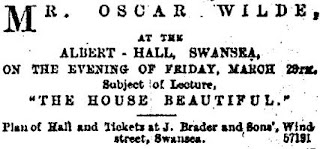
I’m en route to Cardiff Bay to view the
David Hurn exhibition at the
Third Floor Gallery. On this crisp autumn afternoon Bute Street itself is a bit of a street photographer’s dream. Sprawled on the grass outside the Salvation Army hospice a pair of grizzled alcoholics are necking off-licence lager. Further along the thoroughfare a cluster of Yemeni women gossip in the shadow of St Mary’s Church. At the PDSA, a man leads a three-legged dog inside for some canine maintenance. Wish I’d brought my camera.
This used to be Cardiff’s most notorious street but long gone are the cafes, brothels, and fearsome boozers, with names like the Bucket of Blood, that made Tiger Bay infamous. Instead the non-descript council houses could belong to any estate in Britain. When the bulldozers razed this area to the ground in the mid-Sixties they robbed south Cardiff of a good deal of its character. I buy a mars bar from the doleful mini-market and mentally curse those short-sighted city planners of yesteryear.
Down in the Bay, though, there’s plenty of life in evidence as office workers and locals bustle about the shops. Everywhere, it seems, new buildings have sprung up with their ubiquitous wave motifs – architectural nods to Cardiff’s maritime past. At the junction with James Street I press a discrete button on one of the older buildings and get buzzed inside. After manfully scaling three flights of steps I arrive at the gallery itself… which is shut. Note to self: always check gallery opening times before venturing forth. Not to worry though, I’m allowed inside anyway because: “you made the effort to get here.” Good people.
David Hurn’s photographic career has spanned decades. He documented the Soviet invasion of Hungary in ’56; did publicity shots of Jane Fonda in
Barbarella; snapped the Beatles in their prime; and all the while faithfully chronicled Welsh life in its multifarious forms. This exhibition – called Passing Time – takes advantage of Hurn’s longevity by pairing up his early pictures with later works. But these are not random juxtapositions – the photographs carry visual echoes or recurring motifs. These aesthetic tics and thematic preoccupations provide insight into the working character of the photographer himself.
A small dog seen on a London street in a photo from 1955, for example, finds a later incarnation in Stockholm in 2010. A nude female model being shot by a barrage of lensmen in Sixties Soho is complemented by a picture of a male stripper taken in Usk in 1995. A more subtle example places the Beatles in flight next to four seabirds winging their way over sand dunes (see pic). It’s an interesting idea that even forces the viewer to re-evaluate Henri Cartier-Bresson’s famous notion of ‘the decisive moment’. Is it really the crucial moment that defines a picture, or the unspoken predilections of the photographer?
This unusual presentation of an established
Magnum photographer’s work is thoroughly in keeping with the Third Floor Gallery’s left-field ethos. Proprietors Joni Karanka and Maciej Dakowicz pride themselves on exhibiting cutting edge, contemporary, street photography. In an even more radical step they have invited enthusiasts on the forums of Flickr to pick out their own pairings of Hurn’s work which will later supersede the current exhibition. In other words the public will become the curator.
Despite all these bright ideas the Third Floor Gallery barely survives on a shoestring budget. Like all the best cultural hubs it is the drive and enthusiasm of maverick individuals that keeps the place ticking over. Funding, at present, is a pipedream especially with the chill wind of recession blowing in. Yet, if I were in charge of the cultural purse strings it is precisely such enterprises with their emphasis on the experimental and the contemporary that I’d be supporting. You’d never know it but Wales has a very strong photographic heritage and with the digital age making photographers of us all we should be allowing movers and shakers like Karanka and Dakowicz to take us forward.
*Passing Time by David Hurn is on at the Third Floor Gallery from November 19 – January 9. David Hurn will be giving a talk at the gallery on December 3, at 7pm.
*An excellent video interview with David Hurn for Daylight Magazine in which he explains the ideas behind his Passing Time exhibition can be found
here.






